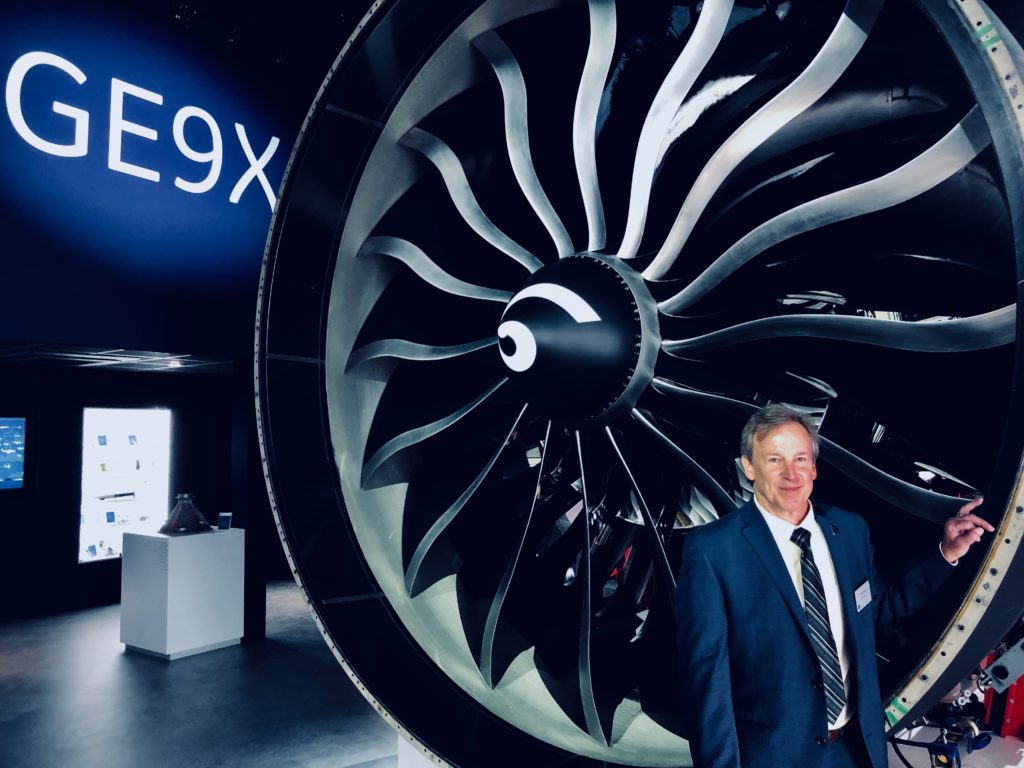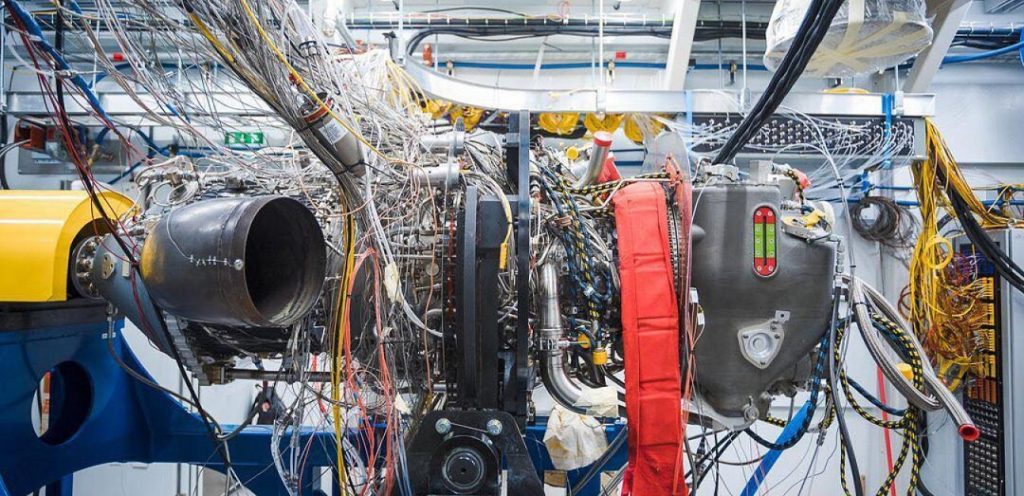Of all the things in the world, there are probably only three things that China can not make: wide-body commercial aircraft, world class aero engines, and latest generation EUV chip fabs. All of the other items it does or could make.
Previously we’ve looked at how the country has for decades tried to develop its own indigenous fighter aircraft. For the most part, however, they’re still unable to reliably produce the latest jet engines. Yes, China does make a variety of aero engines, but the latest, greatest, and most reliable they do not currently have. All in all, it will take them a while to get there, but I don’t think anyone doubts that they will in the end.

GE’s GE9X engine
So, why is it so hard to make a jet engine? This is probably the most extreme example of a physics- and materials-driven product that needs many materials, many processes, a lot of software, and a lot of candle power to combine into a highly specific design. The design would have to be manufactured with the most exacting requirements, specifications, standards, and excellence in order to work. Then, for thousands of flights, while being subject to temperatures over 1500° C, the resulting item has to reliably work every single time. A quality issue, a materials issue, an assembly issue—they can all lead to one error and one error is enough for a fatal failure.
I could give you the plans for the latest aero engines and you could not manufacture these plans. A considerable institutional knowledge is needed in order to do so. Tribal knowledge coupled with exacting standards, procedures, practices, training, and facilities are needed to do so. Every component requires excellence, which means that not only do you have to have good CNC operators, materials, and procedures, but also excellent CNC equipment and knowledge. Similar experience and knowledge is required for all of the materials and processes that you will use. Usually whole cities or ecosystems of hundreds of companies come together to produce engines. From all of the world’s businesses, there are only precious few that can design and make the latest generation of aero engines.

GE’s Cameri production area
A fantastic set of challenges awaits anyone who attempts to conquer the aero engine challenge. At the same time, it requires training, procedures and the dissemination of best practices. This is not something that you can do instantly, no matter how much money you have.
So, imagine that one of the most important things to your country is to produce a reliable jet engine for fighter aircraft, fifth generation and beyond. Imagine you consider this to be absolutely essential for the continued independence and prosperity of your country. Imagine you’re spending billions to try to make Inconel and other nickel superalloys. Imagine you’re spending billions making titanium alloys with high purity and the performance required and spending billions trying to master composites.
You’re calculating fatigue life, testing batches of materials, need to make plants for materials, make forging and casting equipment, and much, much more. You’re building highly precise CNC machines and factories to produce resins to put in your composites because it will take a city to make a jet engine.
And then you learn that those all of important fan blades may be lighter and better if they’re 3D printed. You hear that GE is making an engine that is 10% more fuel efficient due to 3D printing. You hear that 300 GE9X engine components have been reduced into just seven 3D printed parts. And then you learn that a turboprop engine is 35% 3D printed, in which 855 items were combined into just 12 3D printed parts. That engine will be 5% lighter, use 20% less fuel, and generate 10% more power, while it took only two years to develop rather than the more usual 10. Would you be interested in 3D printing then?

GE’s Catalyst Turboprop
Yes—emphatically yes. And not only because you can reduce part count, make the engine lighter and increase its performance. Specifically the idea that 3D printing will speed up your time to market and let you develop engines more quickly will be very appealing to you. Imagine it, complete and total independence for your nation, years ahead of schedule. More mistakes can be made and more parts can be iteratively improved, which is especially exciting to learn. At the same time it may not only be faster, but actually cheaper to design and develop new things in this way. And fewer other technologies, materials and processes have to be used. You’ll see a reduction in the number of production steps, a reduction in the tooling, a reduction in your chances of making mistakes.
By concentrating manufacturing risk on 3D printing while eliminating the chances for errors, reducing cost and speeding up the time to market will make 3D printing an intoxicating technology to explore for anyone who wants to develop jet engines. The business case for GE to use Additive is fantastic but the business case for China to use Additive to gain parity in aero engines is beyond fantastic and of strategic importance to the country.
Subscribe to Our Email Newsletter
Stay up-to-date on all the latest news from the 3D printing industry and receive information and offers from third party vendors.
You May Also Like
New Report: Semiconductor Industry to See $1.4B in 3D Printing Revenues by 2032
“The semiconductor sector has become the most strategically significant area of global industry.” Truer words are hard to come by when it comes to the modern world, and they are...
Will Photonic-Crystal Lasers Revolutionize 3D Printing?
Powder bed fusion (PBF) for metals and polymers predominantly utilizes lasers as the primary heat source. Some directed energy deposition (DED) technologies also employ lasers, while various vat polymerization methods...
3D Printing Unpeeled: Orbex Investment, IndoMIM and HP, Ultrasonic Waves
INDO-MIM has bought three HP Metal Jet S100 printers, operating two in India and one in Texas. This is a win for HP because the company has deep experience in...
3D Printing Webinar and Event Roundup: April 21, 2024
It’s another busy week of webinars and events, starting with Hannover Messe in Germany and continuing with Metalcasting Congress, Chinaplas, TechBlick’s Innovation Festival, and more. Stratasys continues its advanced training...































